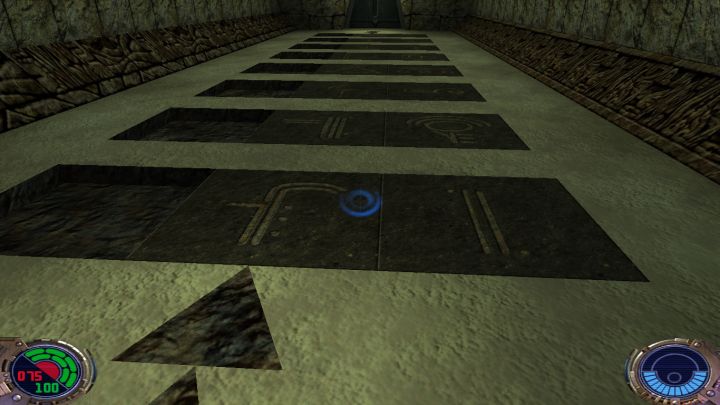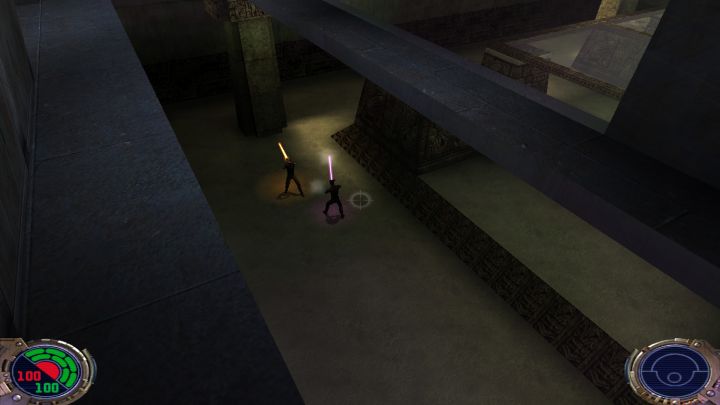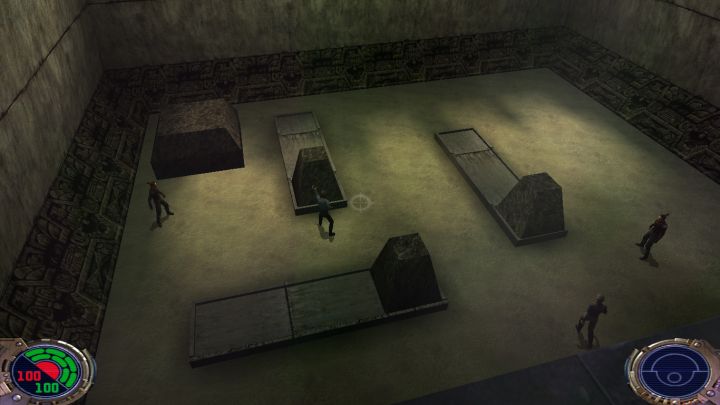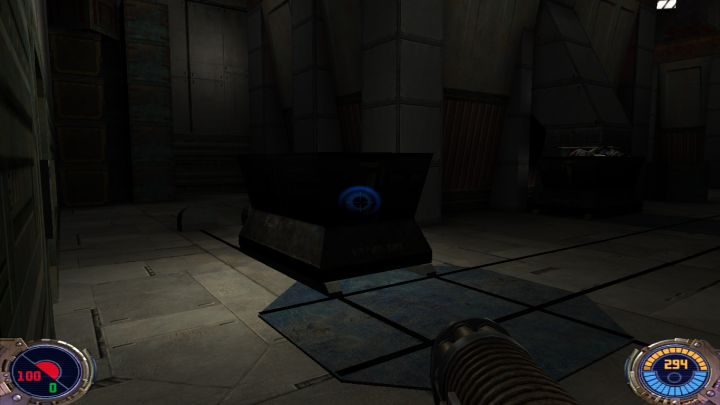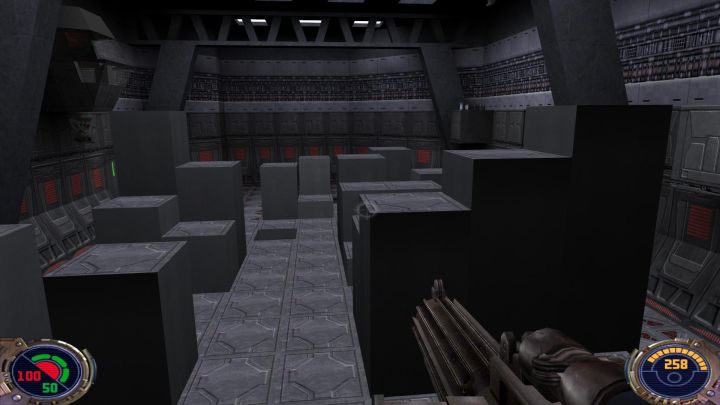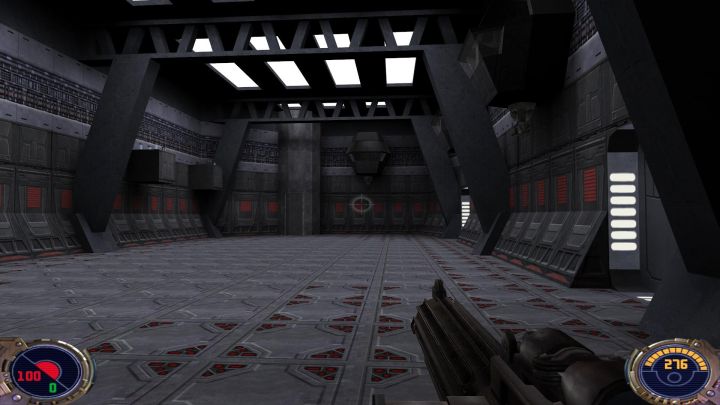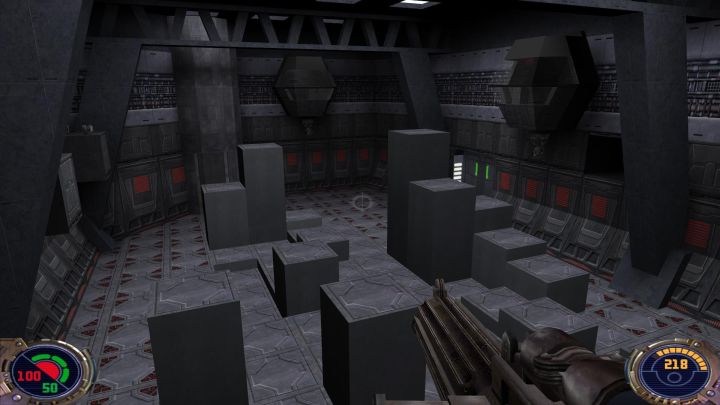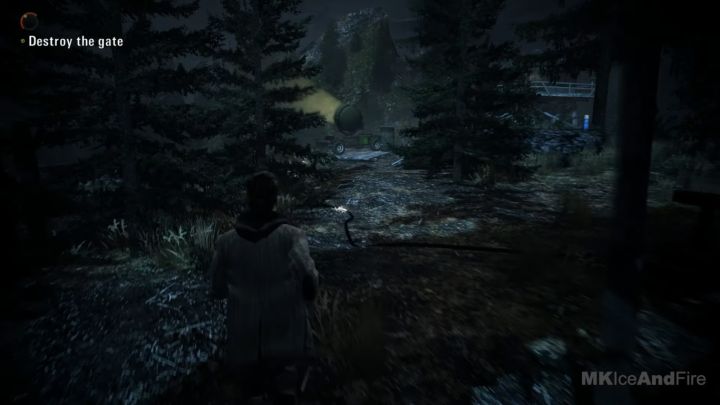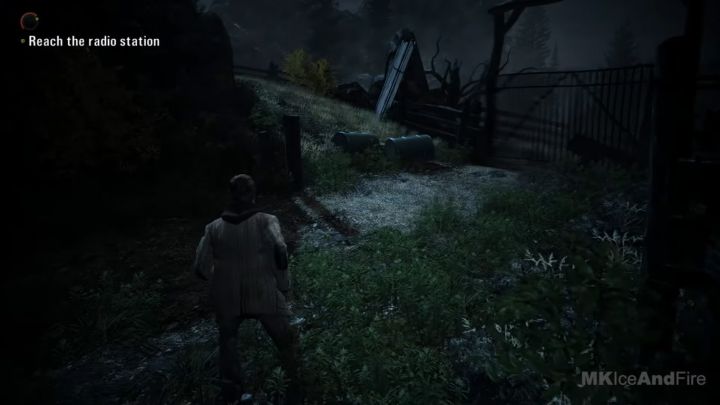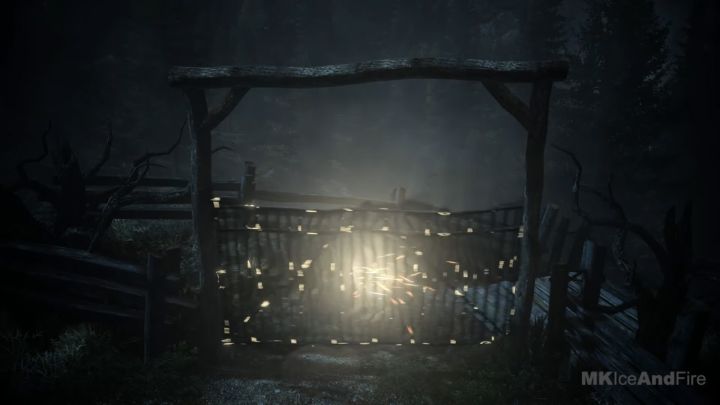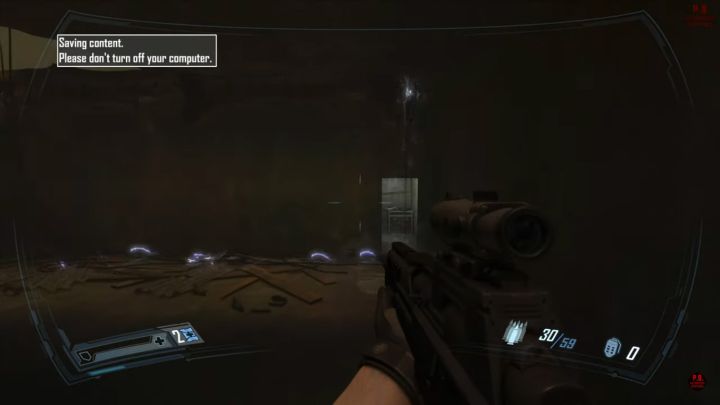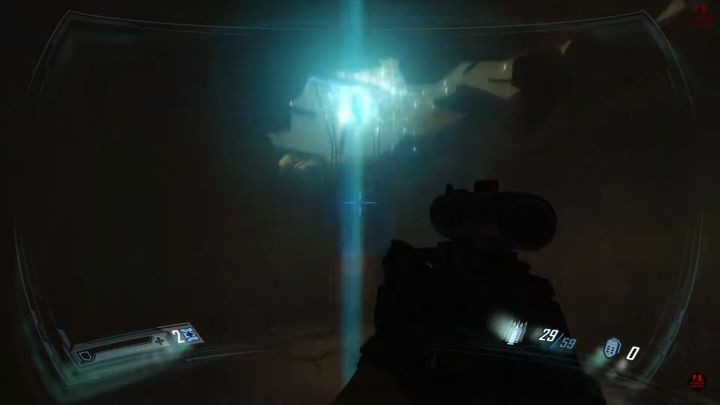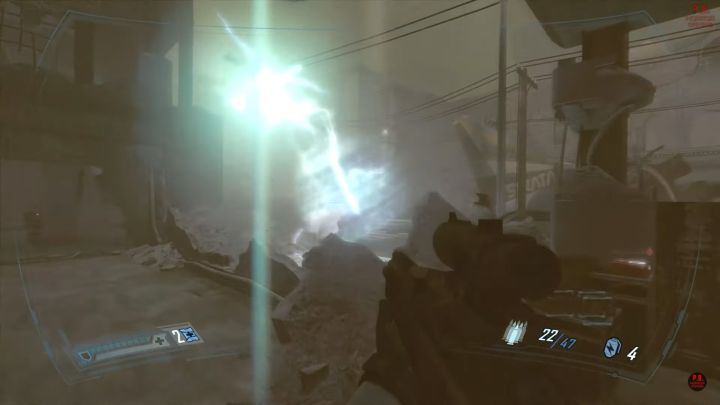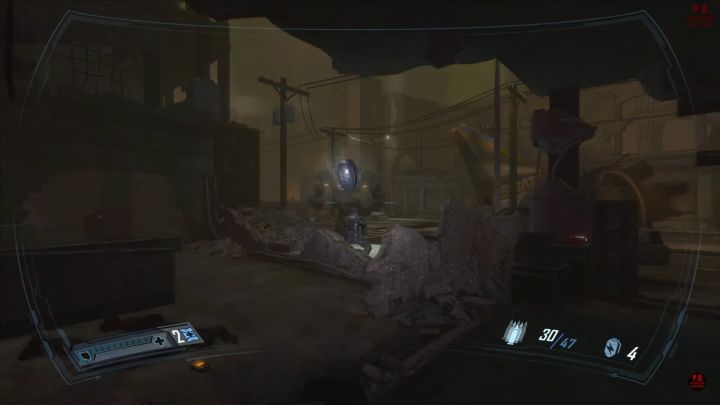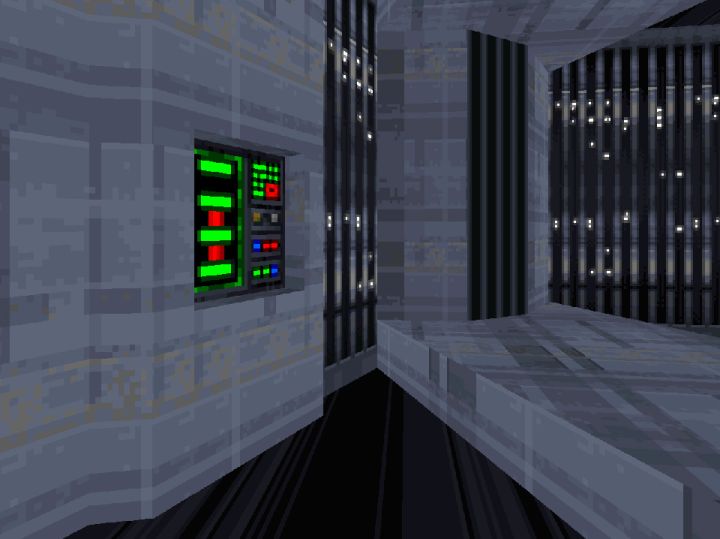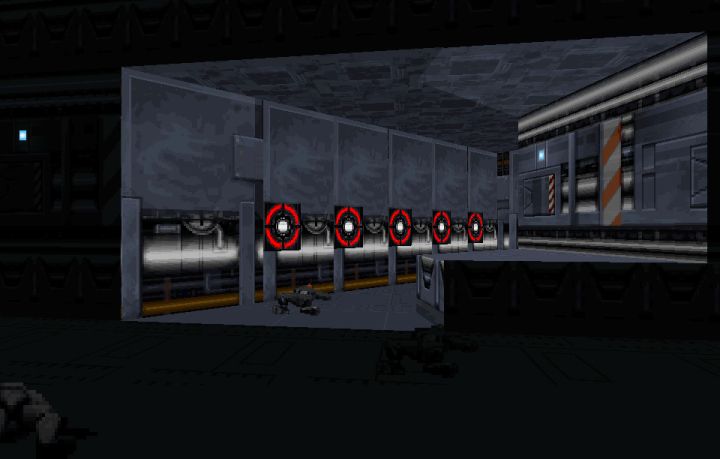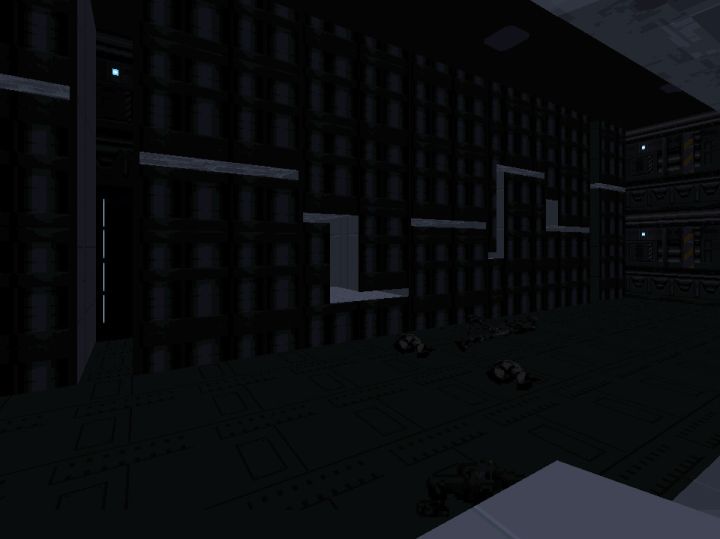Well made challenges
Prey 2006
This game isn't a good example of challenges, but there are some creative ideas. A very simple concept is to combine smaller pieces to build a larger puzzle. This game unsuccessfully attempts to achive that because most of the challenges are either trivial or lack any explanation about what the player has to do. At times this game is illogical. It has a button to activate an elevator placed inside a room protected by a forcefield. If the room is locked from the inside and only a spirit can go in, how did the aliens put that button in there in the first place? It doesn't make any sense.
- Anti-gravity tracks. They can be mobile to transport the player. The activation panel isn't always directly accessible;
- Forcefields. The ability to spirit walk solves it because the button to shut it down is always on the other side of the forcefield;
- Dimensional portals. They allow for a level design that is physically impossible, such as having more space inside than outside. They can also be mobile to give the illusion that the space is moving;
- The portals can also be used to shift gravity by having the other side tilted. This allows for traveling one way only in some cases;
- Gravity shifters. They allow for paths that would be physically impossible, such as walking under and over the same bridge;
- Spirit walking. Some paths only exist in spirit walking. They are always indicated by special signs on walls or floors.
Jedi Knight 2: Jedi Outcast
The first time the player uses their Jedi powers the game presents a training level. Each power is shown in a simple context and then there is a more complex obstacle to pass. It's natural and intuitive. Even before reaching the final objective the player goes through corridors where they can see the jedi powers in action. The game's direction took care to give context by putting the player in a jedi academy.
The powers start at level 1 and throughout the course of the game they level up until level 3. The powers and challenges are always well blended in the environment and the plot. As such, the first level doesn't have any obstacle that requires powers. After being defeated by the villain the game presents levels with progressively higher places, following the player's jedi powers evolution. The game also makes it clear when an object can be pushed or pulled by highlighting the cross-hair with a blue hue.
In addition, the challenges are diverse. For example: force speed can be used to both pass a door that closes too fast after you push a button far away to open it, as well as avoid being killed by energy beams that fire at regular intervals. There is a level that the player shouldn't fire and kill enemies because there is a risk of firing off the alarm and being captured. That is a context that favors the mind trick power and also, breaks the repetition of combats.
There is this challenge room which is revisited multiple times in the same mission. Each time the player visits it the layout is changed a bit, with different tiles rising up and others lowering down. Some hidden turrets are revealed behind the walls. Some items become accessible each time.
Id tech 3 is very old by now but that didn't prevent the designers and develoeprs of this game to create a very cool challenge room. The ideas are pretty simple and produce great results. They didn't have access to modern realtime lighting, dynamic geometry, realtime destructible environments or complex interactions between the player and the enviornment. Yet, the result is very good.
Even in a 2D game I can imagine this same concept of reusing the same room and elements to produce different challenges by rearranging the pieces. I think that one extreme example of this is Path of Exile, because it relies so heavily in randomization that from some handful pieces they generate trillions of combinations.
Alan Wake
Another type of obstacle that the game has is a gate possessed by the supernatural dark force. Alan doesn't have a flash light, but there is a strong light source placed there for this purpose. The light source requires a power generator to turn on. Activating the power generator turns on the light but for a short period of time. The cable connecting the light with the generator has leaking points that explain why the light turns off so quickly. The challenge is intuitive because the time between activating the generator and the light turning off is more or less the same to the time that the player takes to run from one end to the other, with a margin for error. The player has to think a bit to notice that there is enough time to point the light towards the gate and to activate the generator. The generator keeps running long enough to burn away the shadows possessing the gate.
In Alan Wake there are many power generators and light sources placed in spots where combat scenes were foreseen. Either Alan doesn't have a flash light at hands or there are many enemies and the light source is there to help the player.
Another type of obstacle that the game has is a gate possessed by the supernatural dark force. Alan doesn't have a flash light, but there is a strong light source placed there for this purpose. The light source requires a power generator to turn on. Activating the power generator turns on the light but for a short period of time. The cable connecting the light with the generator has leaking points that explain why the light turns off so quickly. The challenge is intuitive because the time between activating the generator and the light turning off is more or less the same to the time that the player takes to run from one end to the other, with a margin for error. The player has to think a bit to notice that there is enough time to point the light towards the gate and to activate the generator. The generator keeps running long enough to burn away the shadows possessing the gate.
In Alan Wake there are many power generators and light sources placed in spots where combat scenes were foreseen. Either Alan doesn't have a flash light at hands or there are many enemies and the light source is there to help the player.
When Alan Wake is making an escape from the shadows that invaded the Bright Falls' lodge, the player has no weapons or flash light. The exit door is locked and there is no key. The shadows possess a decorative ball and attack the player with it. At this point the player notices that the ball can destroy the door to escape.
F.E.A.R. 2: Project Origin
In this part of the ruined city the player finds a passage blocked by electric cables and a water puddle. The player intuitively knows that electricity is a harmful obstacle and before progressing there should be a way to turn the electricity off. If the player follows the cable they can easily see that there is transformer on an utility pole. Shooting the transformer blows it up and shut downs the electricity current.
The obstacle is well made because it's part of the environment and also serves to teach the player. Up ahead there are hard enemies that have a weakness related to electricity. The enemies were placed under transformers and if the player blows it up, the electrical arc harms the enemy. The player can choose to not blow the transformer up but by doing so the enemy becomes much harder to kill.
Dark Forces
This puzzle is somewhat complicated depending on how easy or hard it is for the player to make the association between the map and the structure. The goal is inside a structure that is an hexagon shaped vault with 3 layers. The green lines represent the walls. The blue squares represent the switches and the red squares the doors. Each switch has three red lights and 4 green bars. What the player has to understand is that the green bars represent the walls and the red lights represent doors that are closed. If the player is able to see the path to the center of the vault in the map and grasp the logic behind the switches, he or she is going to see how this puzzle works to get inside.
The color coding here should be easy to get. However, some types of players have a hard time figuring it out and this probably is related to how they make associations and what drives their attention. What is obvious to one player is not for another and vice-versa.
I think that most kids have at least once faced the "connect the dots to trace a figure" problem in their lives. Or played the "connect the pipes" game. This puzzle is like that. It's pretty simple and shouldn't be difficult to most players. Sometimes simple puzzles can have advantages over complicated ones. This is an example of that.
Note: Bioshock has the "connect the pipes" puzzle but it becomes bothersome for some players due to its repetition. That is to say that overusing the same puzzles is also a problem in some games.







